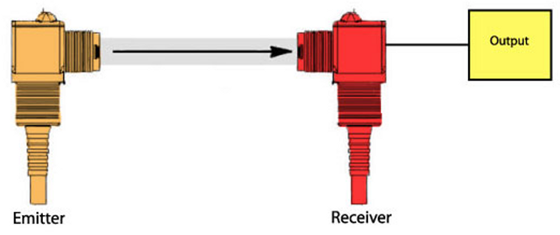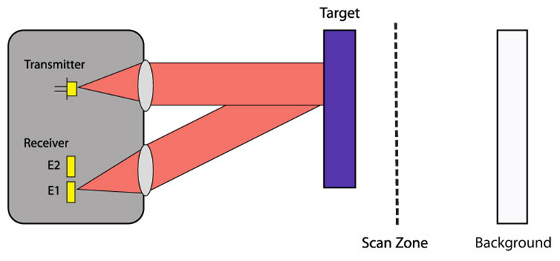This article describes a common detection problems encountered in automated material handling equipment that are easily solvable.
How many times have technicians replaced a supposedly defective photoeye only to discover that the replacement did not fix the problem? All too often, the standard practice in many maintenance organizations is to crank up the gain on the new photoeye, but a recent case illustrates the issue and the correct fix.
Intermittent detections occurred in a distribution center where cases of bottled water were transported via conveyor through a high speed sorter and diverted to truck loading lanes. The photoeyes were shooting through the bottles of water without having detection occur. The operator called a technician who replaced the photoeye and, during installation, turned the receiver gain to the maximum setting, as was the practice. The conveyor ran well until water, again, started passing through the line. It was at this point that the operator noticed that only cases of water were failing detection. A process engineer investigated, reduced the photoeye gain, and suddenly the problem disappeared.
The practice of maximizing gain is a legacy with low power emitters and low gain receiver circuits found in early photo sensors. Today’s “super bright” LEDs emit a more powerful, purer light that has a specifically targeted wavelength from infrared to ultraviolet. Many photoeye emitters also now employ low power lasers, usually in the infrared spectrum. Additionally, most photoeye receivers employ integrated circuit signal processing, which greatly increases the sensitivity and discrimination of the receiver.
The proper method for setting the gain on thru-beam and retro-reflective photoeyes is:
- Without an object present, ensure the photoeye emitter properly aligns with the reflective target or receiver.
- Slowly increase the gain until the output LED just changes state, then increase an additional 1/8 turn.
- Verify operation by placing an object (preferably the object causing the difficulty) into the beam and ensure the output LED changes state.
- If setting the gain in this manner does not correct the detection failures, perhaps another type of photoeye is required (i.e. diffuse instead of thru-beam).

The proper method for setting the gain on a diffuse photoeye is as follows:
- Place the object to be detected at the desired distance from the photoeye (again, preferably the object causing the detection problems).
NOTE: Pay attention as to where the object normally is on the conveyor- in the center, aligned to the far edge, etc. Place the object at the farthest detection distance. - Slowly increase the gain until the output LED just changes state, then increase an additional 1/8 turn.
- Verify operation by observing the output LED as several objects pass the photoeye.

Setting photoeye gain in this manner will reduce detection errors, but prolong the life of the photoeyes. Of course, the next step is educating the maintenance force on the consequences of maximizing sensor gain and the proper gain setting procedures, but that will be discussed in a later entry.

